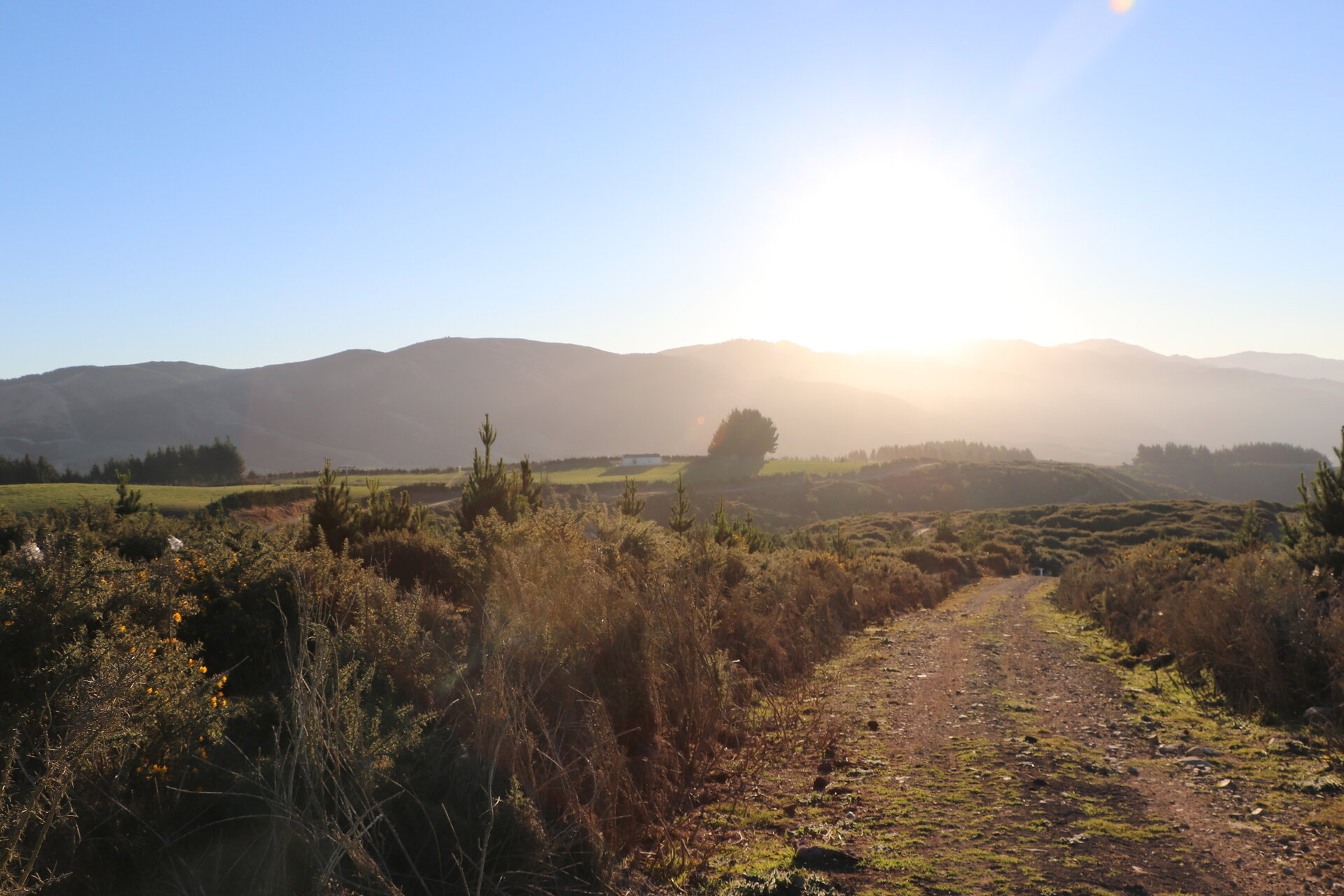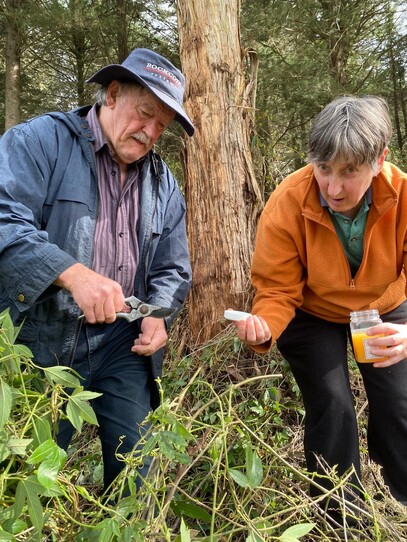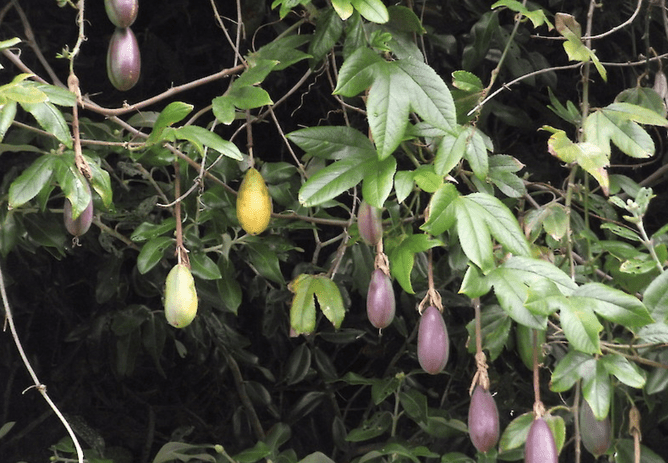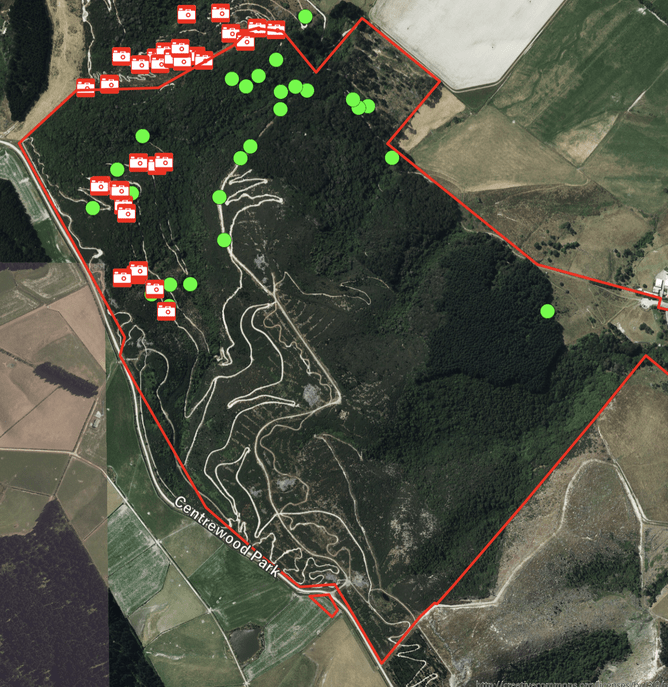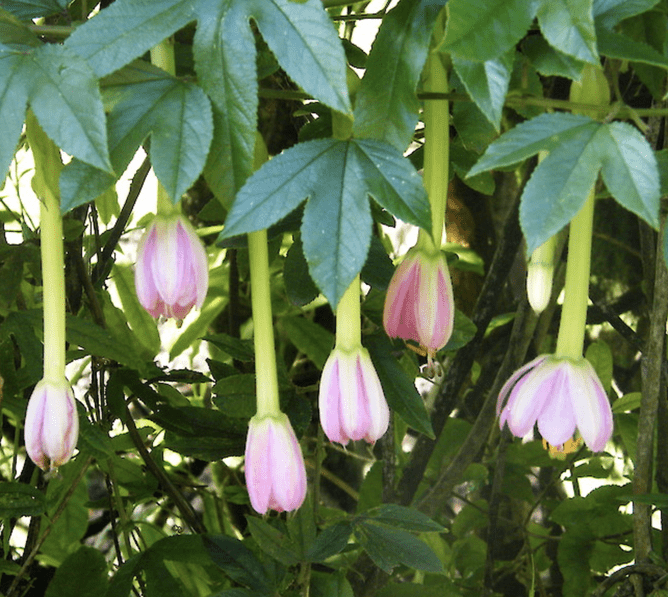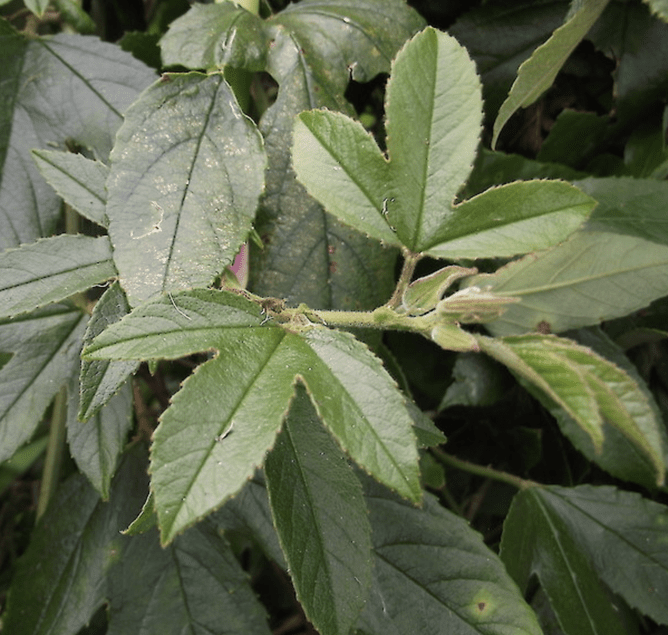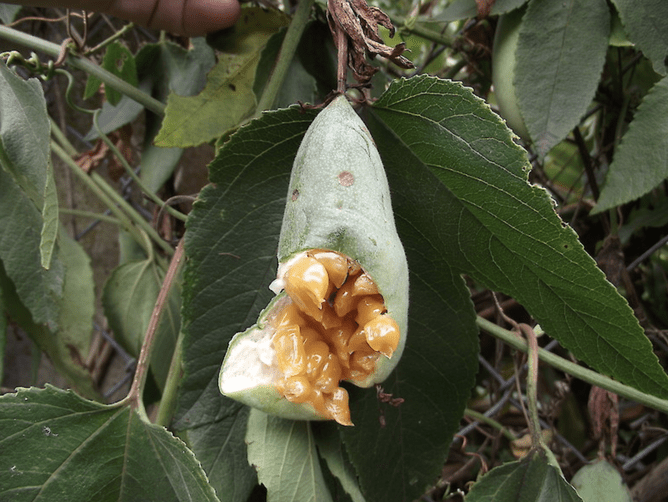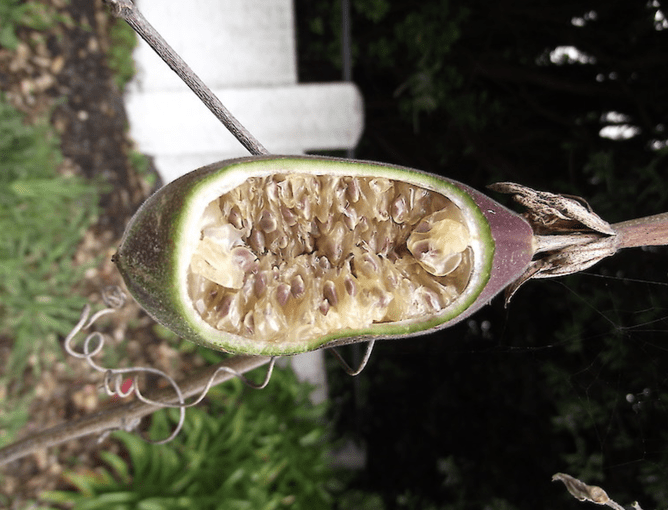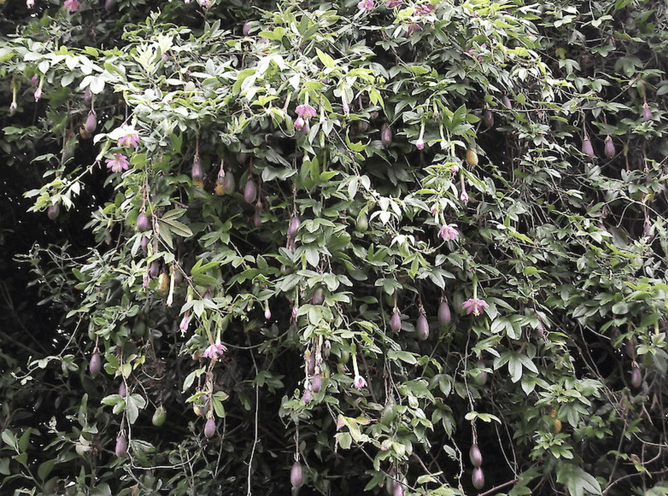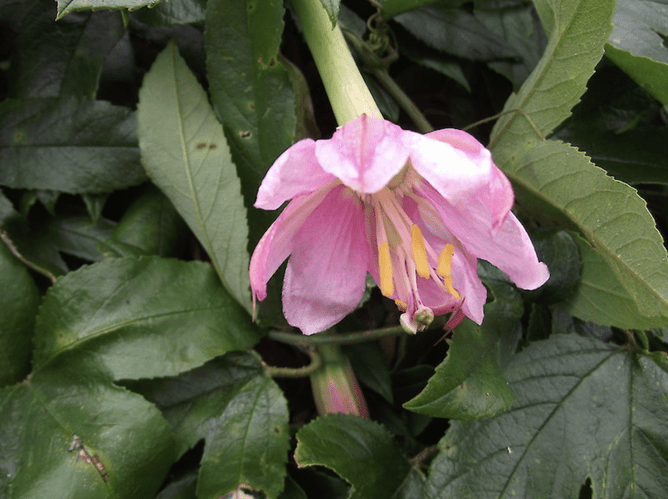With weather conditions perfect at the weekend, we would like to extend a big THANK YOU to a group of volunteers who spent a very satisfying Sunday afternoon searching for and dealing to clumps of “Banana Passion Fruit” or Botanical Name Passiflora ‘Tacsonia’ subgroup Family Passifloraceae (passionfruit) found wound around bushes and climbing high up into branches of tall trees.
Although this plant has beautiful ornate flowers and delicious edible fruit, enjoyed by birds, animals and humans – it is invasive and listed by E-CAN as a plant to be discouraged and dealt to wherever it is discovered growing. Seeds are dispersed by birds and animals and grow in most soils.
Weedbusters.org.nz
Environment Canterbury had recently conducted an aerial (drone) study recently over the Ecosanctuary site and then forwarded their findings (identified on a map green dots) representing patches of this plant.
Environment Canterbury (E-CAN) had advised us a couple of months ago that following their survey, there were quite a few patches of this invasive pest plant scattered around the Ecosanctuary hill block site.
Banana Passionfruit locations identified by Environment Canterbury as green dots
On Sunday we tackled an area on the lower track and after two and half hours had quite a mound of vines pulled down from trees, cut vines and carefully dunked stems into a weedkiller solution.
We will be watching for visible signs of plant kill ...by observing drooping leaf that indicates vines remaining strung up in the high branches have succumbed!
Banana passionfruit
Botanical Name
Passiflora ‘Tacsonia’ subgroup
Family
Passifloraceae (passionfruit)
Also known as
Banana passion flower, wild blue-crown, wild passion vine. Both virtually identical in appearance and characteristics.
Where is it originally from?
Latin America
What does it look like?
Vigorous, evergreen, high-climbing vines (<10 m) with long, densely hairy stems which are angular when young, and which have many spiralling tendrils. Leaves are 3-lobed (each lobe 5-14 cm long) with middle lobe the longest, edges serrated, and undersides covered in down. From Jan-Dec pink hanging flowers (7 cm diameter) with central tube (60-95 mm long) are followed by hanging, thin-skinned fruit (7-12 x 2-4 cm) ripening from green to yellow or orange, with sweet edible orange pulp and dark red seeds (4-6 mm long).
Are there any similar species?
P. pinnatastipula, P. antioquiensis, P. caerulea (qv), P. edulis (qv).
Why is it an invasive pest species?
Grows to medium-high canopy, where it forms large masses. Grows rapidly in most soil types, and produces highly viable seed in two years. Partly tolerant to shade, damage and drought, and stems root where they touch the ground.
How does it spread?
Birds, feral pigs and possums carry seeds some distance. Also humans (via eating or discarded fruit). Hedges, orchards, exotic plantations, waste land, gardens, roadsides.
What damage does it do?
Smothers canopy, prevents native plants from establishing. Allows faster-growing or tougher vines to succeed it in dominating canopy. Appears in light wells away from parent plant.
Which habitats is it likely to invade?
Disturbed and open forest, light wells and margins of intact bush, streamsides, coastline, cliffs, consolidated sand dunes, inshore islands.
What can I do to get rid of it?
1. Pull roots up (all year round): Cut off above ground or tie stems in air to prevent them forming roots on contact with soil.
2. Cut trunk and paint stump (all year round): cut trunk near to the ground, and swab freshly cut stump with metsulfuron-methyl 600g/kg (1g/L) or a product containing 100g picloram+300g triclopyr/L (100ml/L) or triclopyr 600g/L (100ml/L) or a product containing 200g 2,4-D+100g dicamba/L (200ml/L).
